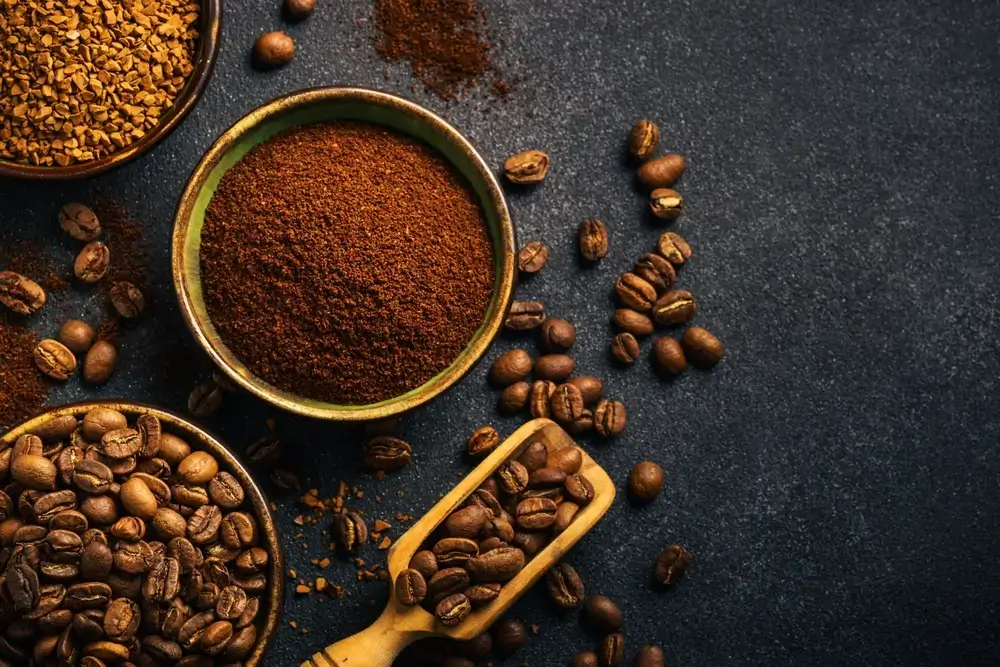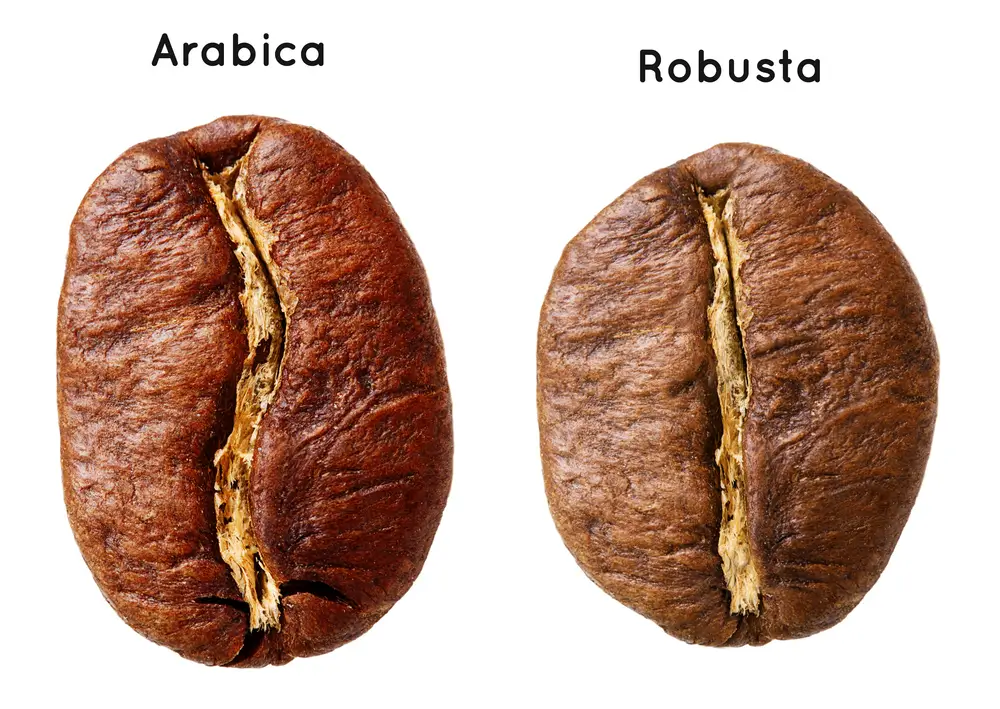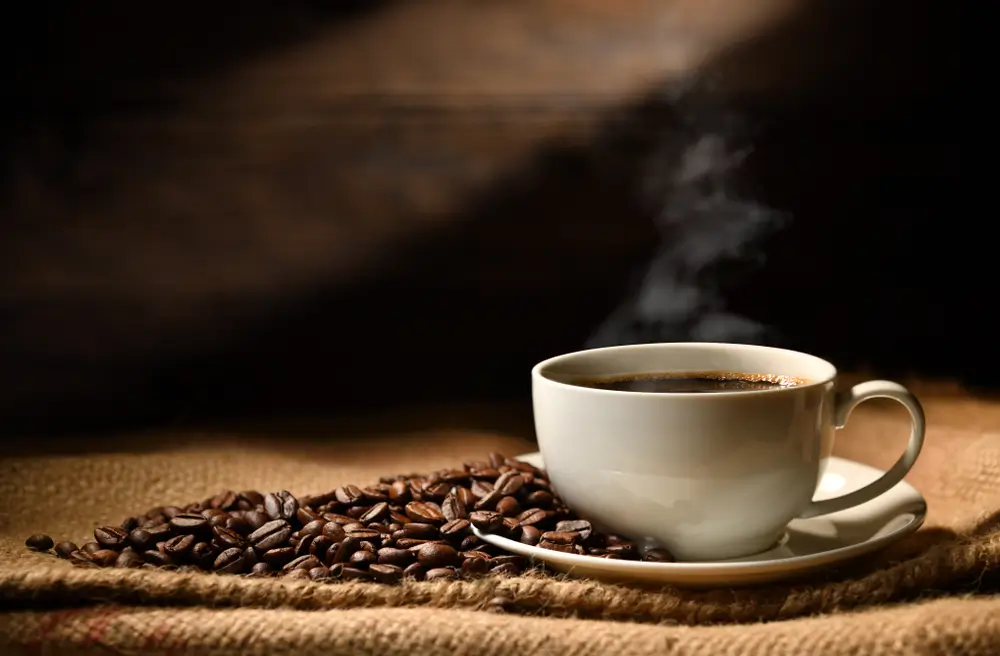Coffee lovers often wonder just how much caffeine is packed into those little beans. Whether you’re a casual drinker or a caffeine aficionado, understanding the caffeine content of coffee beans can enhance your coffee experience.
In this guide, we’ll delve into the intricacies of caffeine levels in coffee beans, providing a comprehensive breakdown to satisfy your curiosity.
Key Takeaways
- Arabica beans typically have 1.2% to 1.5% caffeine, while Robusta beans have about 2.2% to 2.7%.
- Factors like bean type, geographic origin, processing, and brewing method affect caffeine content.
- Decaffeinated beans retain minimal caffeine, and specialty beans’ caffeine levels vary.
- Compared to other caffeine sources, coffee generally has a higher content.
Caffeine in Coffee Beans
Caffeine in coffee beans is more than just a compound; it’s the heart and soul of the beloved coffee experience. It occurs naturally in over 60 plant species, with coffee beans being one of the most well-known sources. But what exactly is caffeine, and how does it find its way into our daily cup of joe?
What is Caffeine?
Caffeine is a bitter, white crystalline purine, a methylxanthine alkaloid closely related to adenine and guanine bases of DNA and RNA. In coffee beans, caffeine acts as a natural pesticide, protecting the plant from insects. When consumed by humans, it works as a central nervous system stimulant, warding off drowsiness and restoring alertness.
Caffeine has played a pivotal role in shaping coffee culture around the world. It’s not just about the chemical kick; caffeine has influenced social practices, work habits, and even art over centuries. Coffeehouses, often termed as ‘penny universities’, were hubs of intellectual and social interaction in 17th-century England, largely due to the stimulating effects of caffeine.
How much caffeine is in a coffee bean?
The caffeine content in coffee beans varies: Arabica beans contain about 1.2% to 1.5% caffeine by weight, and Robusta beans have about 2.2% to 2.7%. Factors influencing this include bean type, growing conditions, processing, and brewing methods.
Factors Influencing Caffeine Levels
The amount of caffeine in coffee beans isn’t a fixed number. It fluctuates based on several factors, from the type of coffee bean to how it’s processed and prepared. Understanding these variables gives us a clearer picture of why different coffees can have such varied caffeine content.

Type of Coffee Bean
There are two primary types of coffee beans: Arabica and Robusta. Arabica beans, which have a sweeter, softer taste, generally contain around 1.5% caffeine. On the other hand, Robusta beans, known for their stronger, harsher taste, contain about 2.7% caffeine. The choice between Arabica and Robusta significantly influences the caffeine level in your coffee cup.
Geographic Origin and Growing Conditions
The region where coffee is grown can also impact caffeine levels. Beans grown at higher altitudes tend to have less caffeine, as do beans from certain countries or regions. The soil composition, climate, and other environmental factors play a significant role in determining caffeine content.
Processing and Roasting
The way coffee beans are processed and roasted also affects their caffeine content. Generally, the roasting process reduces the bean’s caffeine concentration. However, it’s a common misconception that darker roasts have more caffeine. In reality, lighter roasts can retain more caffeine because they’re roasted for a shorter period.
Brewing Method
Finally, the brewing method dramatically influences the caffeine content in a cup of coffee. Espresso, for instance, has more caffeine per ounce than regular coffee, but because the servings are smaller, a full cup of brewed coffee typically contains more caffeine. Factors like brewing time, temperature, and the grind size can also alter the caffeine levels.
How much caffeine is in Coffee?
When it comes to the caffeine content in coffee beans, most people are curious about the average amount they’re consuming. While we’ve discussed how various factors can influence this, it’s useful to have a general understanding of what you can expect from common types of coffee beans.
Caffeine in Common Coffee Types
- Arabica Beans: On average, Arabica beans contain about 1.2% to 1.5% caffeine by weight. Given their popularity, most coffee consumed globally is relatively moderate in caffeine content.
- Robusta Beans: Robusta beans pack a stronger punch, with about 2.2% to 2.7% caffeine by weight. This makes them a popular choice for espresso blends, where a more robust flavor and higher caffeine content are desirable.
Specialty and Hybrid Varieties
As coffee cultivation has evolved, so have the varieties of beans available. Some specialty and hybrid beans have been developed to offer unique flavor profiles, and their caffeine content can vary. For instance, some high-caffeine strains have been cultivated specifically for those seeking a stronger buzz.
Decaffeinated Coffee Beans
For those who love the taste of coffee but want to avoid too much caffeine, decaffeinated beans are a popular option. The decaffeination process typically removes about 97% of the caffeine, leaving a residual amount that is usually negligible.
How Bean Size Affects Caffeine Measurement?
It’s also important to note that caffeine content is often measured by weight. Larger beans have more volume but don’t necessarily have a higher concentration of caffeine. This means that a scoop of small beans might have more caffeine than a scoop of large beans because there are more beans in the scoop.
Coffee Content in different drinks
Caffeine isn’t exclusive to coffee; it’s found in a variety of foods and beverages. By comparing the caffeine content in coffee beans to other sources, we gain a broader perspective on caffeine consumption.
| Source | Caffeine Content | Notes |
|---|---|---|
| Coffee | High | A cup of brewed coffee contains a significant amount. |
| Tea | Moderate | Black tea has about half the caffeine of coffee. Green and white teas have lower caffeine levels. |
| Soft Drinks and Energy Drinks | Varies | Cola typically has about one-third the caffeine of coffee. Energy drinks can have caffeine levels similar to coffee. |
| Chocolate and Cocoa Products | Low | Dark chocolate contains more caffeine than milk chocolate. |
| Over-the-Counter Medications | Varies | Some medications contain caffeine for enhanced effects. Caffeine levels can equal or exceed those in coffee. |
Health benefits of Caffeine
Caffeine, particularly from coffee, has been the subject of extensive research regarding its health implications. While it’s celebrated for its stimulating effects, it’s essential to consider both its benefits and potential risks.

Benefits of Caffeine Consumption
Caffeine is known for its ability to enhance alertness and improve concentration. Studies suggest that moderate coffee consumption can be linked to several health benefits, including:
- Reduced Risk of Neurological Diseases: Regular caffeine intake has been associated with a lower risk of Alzheimer’s and Parkinson’s diseases.
- Cardiovascular Health: Some studies indicate that caffeine can support heart health, potentially reducing the risk of stroke and heart disease.
- Antioxidants and Anti-inflammatory Properties: Coffee is rich in antioxidants, which can combat cell damage and reduce inflammation.
Side Effects of Caffeine
However, caffeine consumption is not without risks, particularly when consumed in high quantities. Potential side effects include:
- Excessive caffeine intake can disrupt sleep patterns and lead to insomnia.
- High doses of caffeine can exacerbate anxiety symptoms and cause feelings of jitteriness.
- Regular caffeine use can lead to dependency, and abrupt cessation might result in withdrawal symptoms like headaches and irritability.
Stay tuned for more coffee brewing guides, recipes, and bean roasts.


